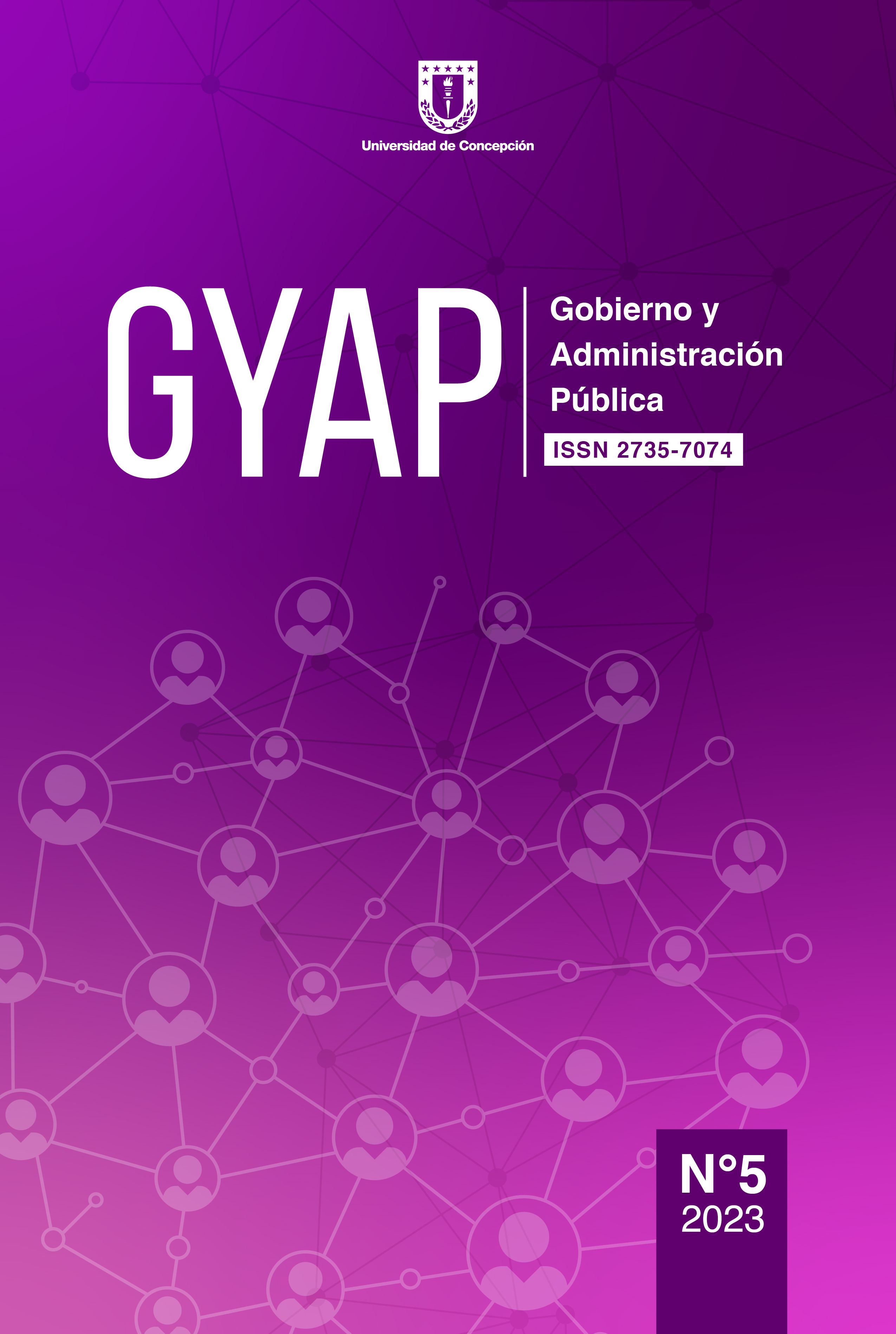Children's participatory budgets. The case of San Pedro de la Paz
DOI:
https://doi.org/10.29393/GP5-4PPAM20004Keywords:
Citizen Participation, participatory budgeting, childhoodAbstract
Regarding citizen participation, there are many experiences of implementation of various mechanisms, however, these spaces do not always consider citizens who are still in the formative stage. In this sense, this proposal focuses on the case of the Municipality of San Pedro de la Paz, which in 2017 adds to the participatory budgets that had been implemented since 2009, one aimed at children between 6 and 13 years old, giving them the space to participate and deliberate to decide the destination of the resources available to them for their benefit. This work presents the experience identifying weaknesses and strengths of the process in relation to citizen participation, using interviews and reports requested through transparency. After carrying out the study, it is clear that, on the one hand, the importance of considering children in public decisions is recognized, but that the process itself does not guarantee that the public interest, a key element in citizen participation, is considered in the final decision.
Downloads
References
Carmona, R., Martínez, C. (2014). “Luces y sombras del presupuesto participativo en la Región Metropolitana de Buenos Aires”. Región y sociedad, Nº26, 267-308.
Centro Latinoamericano de Administración para el Desarrollo (2009). Carta iberoamericana de participación ciudadana en la gestión pública. Lisboa: Centro Latinoamericano de Administración para el Desarrollo. Recuperado de: http://old.clad.org/documentos/declaraciones/cartaiberoamericana-departicipacion-ciudadana/view
Consejo Nacional de Participación Ciudadana y Fortalecimiento de la Sociedad Civil (2017). “Estado de la participación ciudadana y propuestas de reforma a la Ley 20.500 sobre Asociación y Participación Ciudadana en la Gestión Pública”. Santiago de Chile: Consejo Nacional de Participación. Recuperado de: http://consejoparticipacion.cl/como-funciona-el-consejo
Cunill, N. (1991). “Participación Ciudadana”. Centro Latinoamericano para el Desarrollo, (CLAD), Caracas, (Venezuela).
Comunicación personal (2020). Entrevista a Coordinadora de la Oficina de Protección de Derechos de Infancia. Municipalidad de San Pedro de la Paz, 13 de Julio de 2020, San Pedro de la Paz, Chile.
Comunicación personal (2020). Directora de Desarrollo Comunitario, Municipalidad de San Pedro de la Paz, 11 de Mayo de 2020, San Pedro de la Paz, Chile.
Comunicación personal (2020). Encargado de Control de Gestión de la Política Local de Infancia, Municipalidad de San Pedro de la Paz, 28 de Mayo de 2020, San Pedro de la Paz, Chile.
Comunicación personal (2020). Encargado Control de Gestión del Departamento de Infancia, Municipalidad de San Pedro de la Paz, 19 de Febrero de 2020, San Pedro de la Paz, Chile.
Fernández, I. (2006). “Participación ciudadana en el nivel local: Desafíos para la construcción de una ciudadanía activa”. Expansiva.
García, I.; Romero, S.; Aguilar, C.; Lomeli, K. & Rodríguez, D. (2013). “Terminología internacional sobre la educación inclusiva”, Revista electrónica “Actualidades Investigativas en Educación”. Nº13, 1-29.
Guillen, A.; Sáenz, K.; Badii, M. & Castillo, J. (2009). “Origen, espacio y niveles de participación ciudadana”. Daena, Nº4, 179-193.
Gutiérrez, A. (25 de enero de 2011) “‘Open Government’ y crisis económica”. El País, 17.
Insunza, E. & Olvera, A. (2006) “Democratización, rendición de cuentas y sociedad civil: participación ciudadana y control social”. Distrito Federal, México. Centro de investigaciones y estudios superiores de antropología social. (CIESAS).
Ministerio del Interior (2006) Decreto con Fuerza de Ley Nº1 que Fija el Texto Refundido, Coordinado y Sistematizado de la Ley Nº 18.695, Orgánica Constitucional de Municipalidades. Diario Oficial de la República de Chile, 26 de Julio de 2006.
Municipalidad de San Pedro de la Paz (2017). Política Local de Infancia San Pedro de la Paz 2017-2021. San Pedro de la Paz, Chile.
Municipalidad de San Pedro de la Paz (2017). Reglamento General del Proceso de Postulación a Financiamiento a través de Presupuestos Participativos San Pedro de la Paz. San Pedro de la Paz, Chile.
Municipalidad de San Pedro de la Paz (2018a). Plan de Desarrollo Comunal 2018-2021. San Pedro de la Paz, Chile.
Municipalidad de San Pedro de la Paz (2018b). Cuenta Pública 2017. Municipalidad de San Pedro de la Paz, Chile.
Municipalidad de San Pedro de la Paz (2019a) Informe de Evaluación de la Política Local de Infancia, Plan Comunal y Focalizado 2019. San Pedro de la Paz, Chile.
Municipalidad de San Pedro de la Paz (2019b) Decreto N°4409 Bases Presupuestos Participativos 2019 San Pedro de la Paz. San Pedro de la Paz, Chile.
Municipalidad de San Pedro de la Paz (2019c). Cuenta Pública 2018. Municipalidad de San Pedro de la Paz, Chile.
Municipalidad de San Pedro de la Paz (2011) Decreto Nº36. Que modifica la ordenanza de participación ciudadana, aprobada por resolución Nº11, de fecha 27 de abril de 2001, de la manera que se indica. San Pedro de la Paz, Chile. 23 de agosto de 2011.
Municipalidad de San Pedro de la Paz (2022). Plan de Desarrollo Comunal 2022-2029. San Pedro de la Paz, Chile
Muñoz W., & Villa, F. (2020). “El recurso humano para la implementación de la Participación Ciudadana. El caso de las municipalidades de la región de Ñuble”. Territorios y Regionalismos, Nº1. Recuperado a partir de http://revistasacademicas.udec.cl/index.php/rtr/article/view/1362
Naciones Unidas, Asamblea General (1989) Convención sobre los derechos del Niño. Resolución 44/25, Recuperado de: https://www.ohchr.org/SP/ProfessionalInterest/Pages/CRC.aspx
Naser, A., Williner, A., Sandoval, C. (2021). Participación ciudadana en los asuntos públicos: un elemento estratégico para la Agenda 2030 y el gobierno abierto. Comisión Económica para América Latina y el Caribe (CEPAL), Documentos de Proyectos (LC/TS.2020/184), Santiago de Chile.
Nomura, B., & Solari, G. (2005). “Participación de niños, niñas y adolescentes a los 15 años de la Convención sobre los Derechos del Niño”. Save the Children, Suecia.
Pagliai, C. & Montecinos, E. (2006), “Manual de presupuestos participativos en Chile: experiencias y aprendizajes” Santiago. Fundación Friedrich Ebert; Fundación para la Superación de la Pobreza; Ministerio Secretaría General de Gobierno. División de Organizaciones Sociales; Foro Chileno de Presupuesto Participativo.
Quezada, M. (2014) “Estilo y gestión participativa de San Pedro de la Paz” Providencia, Chile. RIL Editores.
Ramírez-Alujas, A (2022) Voces de Gobierno en Chile (2011 – 2021). Ministerio Secretaría General de la Presidencia – Instituto de Asuntos Públicos (INAP) de la Universidad de Chile, Santiago de Chile.
Sintomer, Y. (2005). “Los presupuestos participativos en Europa: retos y desafíos”. Revista del CLAD Reforma y Democracia, Nº31, 1-17.
Trilla, J. y Novella, A. (2011). “Participación, democracia y formación para la ciudadanía”. Los consejos de infancia, Revista Educación, Nº 356, 23-43.
Vargas, M. (2010). “Niveles de participación ciudadana en las políticas públicas: una propuesta para el estudio de mecanismos institucionales de participación”. TLATEOMANI: Revista Académica de Investigación, Nº2, 170-188.
Published
Versions
- 2023-08-27 (2)
- 2023-08-25 (1)
How to Cite
Issue
Section
Copyright (c) 2023 Javier Almendra, Waleska Shumacher Aravena

This work is licensed under a Creative Commons Attribution 4.0 International License.












